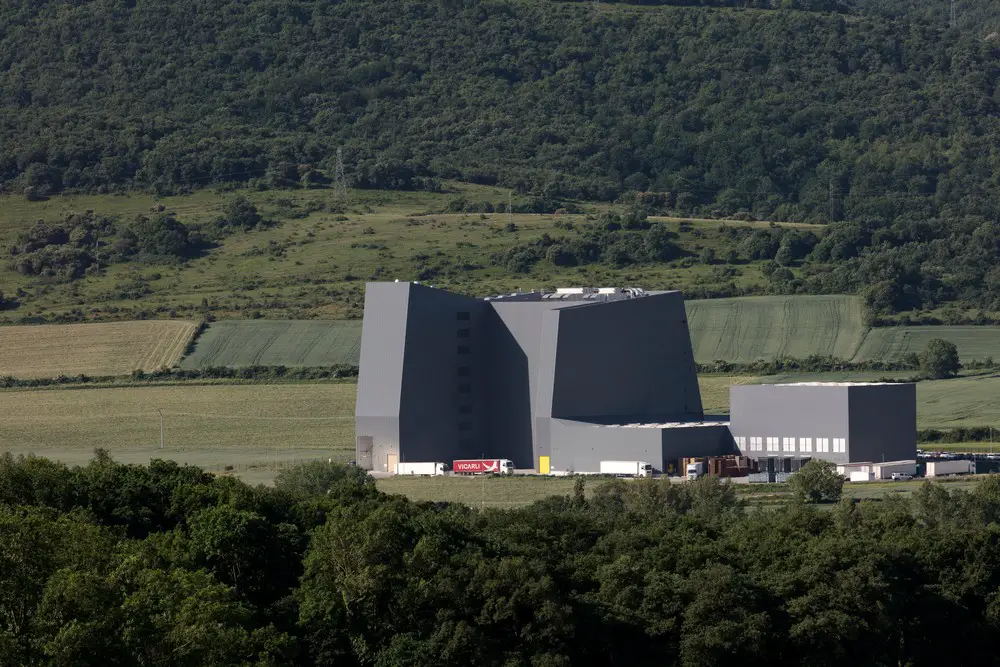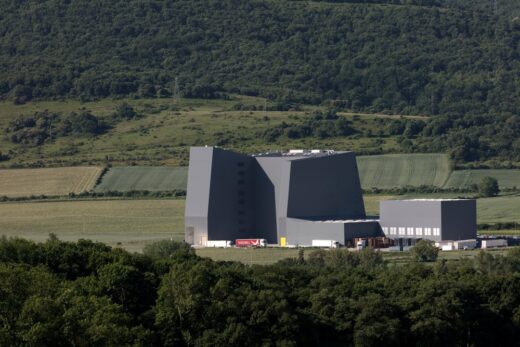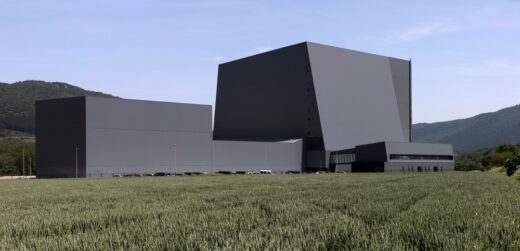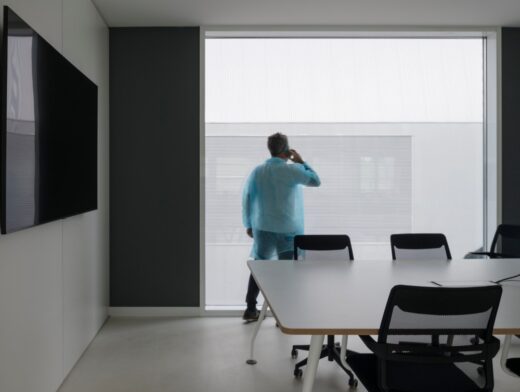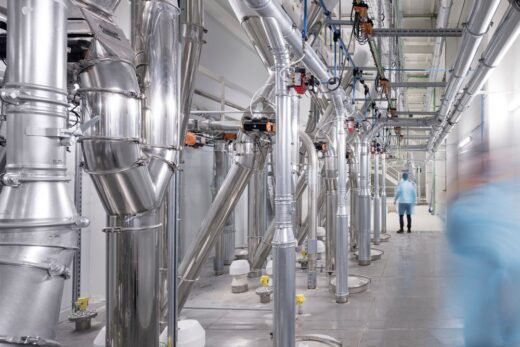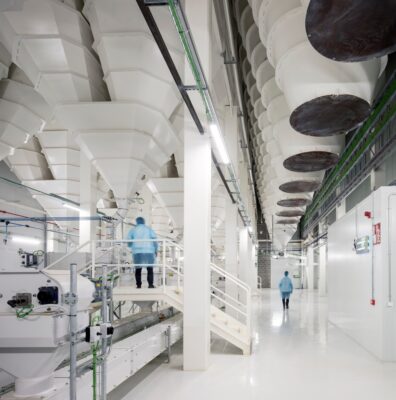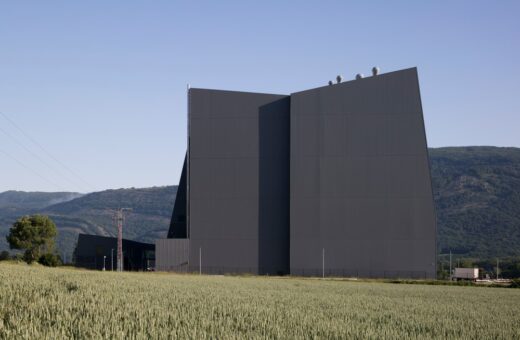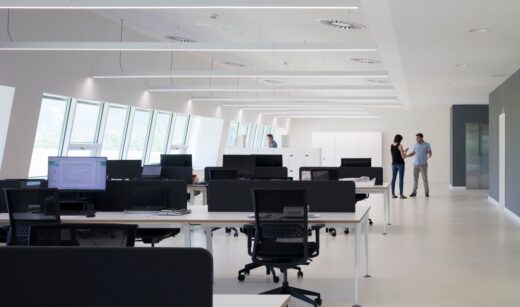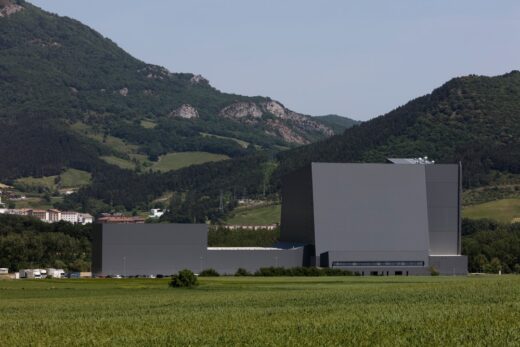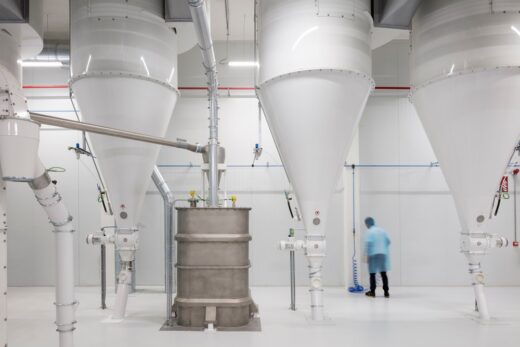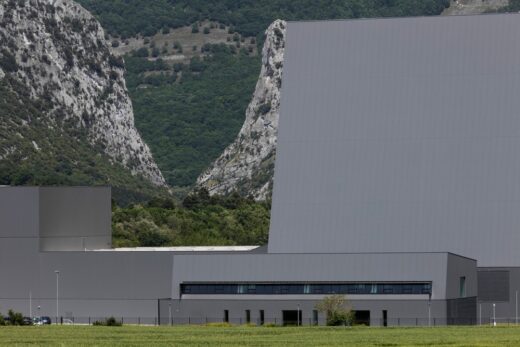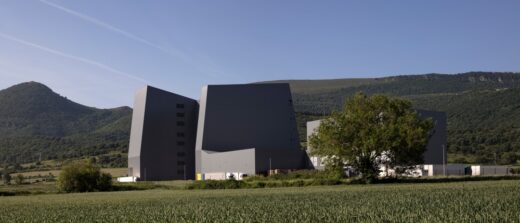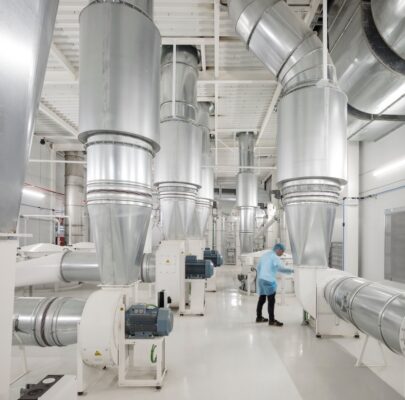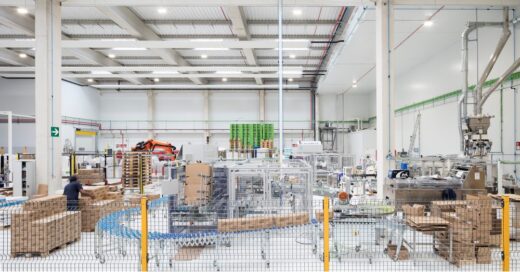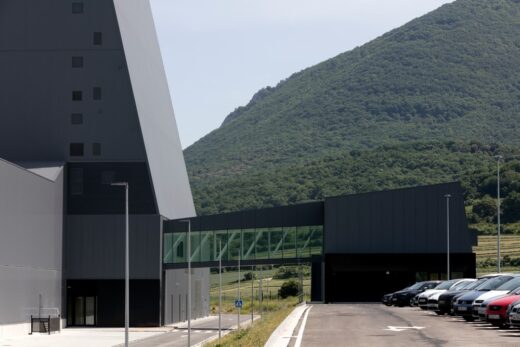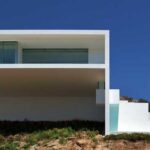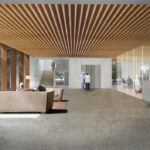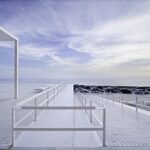HARIVENASA Oat Factory Arakil, Navarra Commercial Building Development, Spanish Architectural Project Photos
HARIVENASA – Oat Factory in Arakil
9 Aug 2022
Architects: IDOM
Location: Arakil, Navarra, Spain
Photos by Aitor Ortiz
HARIVENASA – Oat Factory, Spain
The Arakil valley offers an environment of high natural value. It is made up of green meadows and humid forests surrounded by imposing mountains. Integrating the HARIVENASA – Oat Factory, a large cereal processing factory into the site posed an additional challenge to the already complex design task.
One of the objectivess was to ensure that the future building, despite its imposing dimensions, would be as neutral as possible, both in color and in appearance. Likewise, it was necessary to avoid an industrial aspect that would distort the perception of the valley. For this reason, the design was approached under parameters typical of a museum or technological facility.
To develop these premises we had the support of the client and local agents. The volume was worked on as if it were just another rock, a task sometimes closer to sculpture than to architecture itself.
The building houses an oat processing operation, which begins with the reception and storage of the grain in silos and ends with the packaging and shipping of the finished product. It contains modern installations that stand out for the high quality of their equipment, typical of food environments subject to stringent functional and regulatory standards.
There is an external office building that, like a satellite, is linked to the factory by means of a glass walkway. From here, it is possible to clearly appreciate both the imposing volume of the building and the bucolic landscape that surrounds it.
The Arakil valley offers an environment of high natural value. It is made up of green meadows and humid forests surrounded by imposing mountains. Integrating a large cereal processing factory into the site posed an additional challenge to the already complex design task.
Given the industrial nature, size and sophisticated operations, the new building needs to be adapted to the eminently rural environment where it is located. In order to mitigate the visual impact of a building of these dimensions, a meticulous design was proposed, with simple volumetry and neutral colors. The aim is to achieve a clean appearance, with a certain technological look that enhances the value of the surrounding environment.
The proposed construction is made up of a series of regular and simple volumes of different heights joined together. Given its unique industrial configuration, we understand that it cannot incorporate elements of vernacular architecture such as constructive typologies or certain traditional aesthetics of this land. We propose a building with a polished image, more typical of a service building than of a mere industrial factory. Noticeable and simple volumetries that show the construction as an abstract object with a certain plastic and geometric value. This is the only way we consider viable to insert a building of these characteristics into an environment of such high natural importance.
All the facades are made up of a continuous cladding that, based on the same color and different vertical textures, offer a harmonious and homogeneous image. The façade cladding is a sandwich panel with an architectural metallic finish.
Given the large volume and height of the building, we opted for a dark metallic gray color, so as not to stand out in the environment. We fully understand that an infrastructure of this scale must “disappear”, which is why light, bright colors or tones that reflect the sun’s rays have been avoided. The panel in question has an architectural appearance that offers an image of quality more typical of civil or commercial facilities.
A metallic finish with a large vertical texture was chosen. The aim is to be visible in the distance, providing light contrasts that contribute to visual and constructive quality.
The structure will be metal and concrete slabs with high load-bearing capacity and fire resistance. It will be heavily insulated, since thermal and humidity control is required, in addition to the fact that the environment must be overpressured. It is an environment where good food processing practices regulations apply, so extreme care must be taken in construction details that enhance hygiene.
The building has an oat processing program, which begins with the reception and storage of grain in silos and ends with the packaging and shipping of the finished product. It houses modern installations that stand out for the high quality of their equipment, typical of food environments subject to high functional and regulatory standards. The plant is designed with a high level of efficiency and automation. It has a finished product storage area with a capacity of 4,000 pallets. The intermediate height volume houses an automatic warehouse connected to the packaging lines, so that the process is carried out autonomously.
In addition, the automated warehouse area has four docks for incoming and outgoing products.
The offices are located in an external body, like a satellite, which is linked to the factory by means of a glass walkway. From here, one can clearly appreciate both the imposing volume of the building and the bucolic landscape that surrounds it.
HARIVENASA – Oat Factory in Arakil, Navarra – Building Information
Architects: IDOM – https://www.idom.com/
Project: HARIVENASA – Oat factory in Arakil
Location: Etxarren, Arakil, Navarra, Spain
Office: IDOM
Project architect: Jesús Ángel Armendáriz
Other architects: Daniela Bustamante, María Robredo
Project Management: Gorka Viguri
Costs: Unai Mardones
Structures: CALMESA
Mechanical Installations Engineering
Electrical & Telecommunications Engineering: Naiara Moreno
María Eugenia Gauna
Graphic Design: Gorka Arceniega
CAD: Miguel Ángel Meneses / Arrate López de Maturana
Administration
Site Supervision: Gorka Viguri / Unai Mardones
Construction execution management: Unai Mardones
Client: HARIVENASA
Constructor: OSÉS / CALMESA / TAUXME / HUMICLIMA / UTE ETXARREN / SERTECQ
Area: 18.918 sqm
Honorarios
Project, months – Meses (número): 24 Año/s: 2018-2020
Project execution, months – Meses (número): 29 Año/s: 2019-2022 (2-9-2019_31-1-2022)
Photographer: Aitor Ortiz
HARIVENASA – Oat Factory, Arakil Navarra images / information received 090822 from IDOM
Location: Arakil, Navarra, Spain
Spanish Buildings
Contemporary Spanish Architectural Projects
Spanish Architectural Designs – chronological list
WDC Valencia 2022 Pavilion, Plaça de l’Ajuntament, 46002 Valencia, eastern Spain
Design: Miguel Arraiz + Arqueha
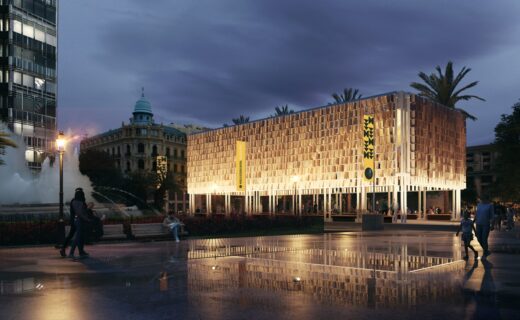
image courtesy of architects practice
WDC Valencia 2022 Pavilion
Joint Research Centre for the European Commission, EXPO ´92 Sevilla site, Isla de la Cartuja, Seville, southwestern Spain
Design: BIG – Bjarke Ingels Group
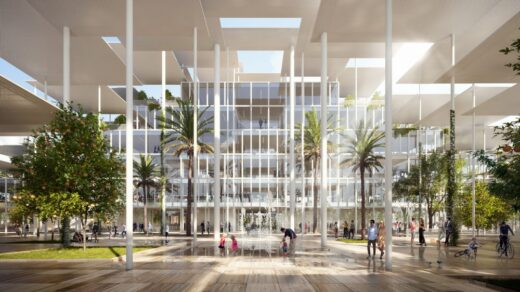
image © Playtime
Joint Research Centre, Seville
El Refugio, Cuatro Calzadas, Salamanca
Architect: Álvaro Sánchez de Miguel
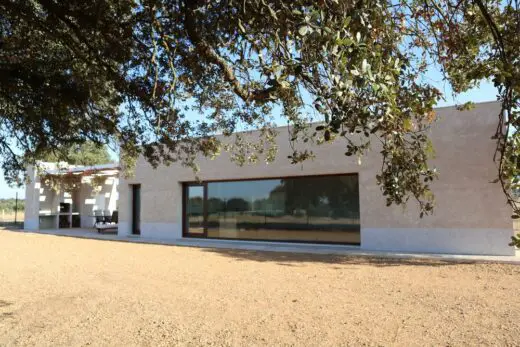
photo : álvaro sanchez de miguel arquitectos
The Cabin Home
IDOM Buildings in Spain
IDOM Building Designs in Spain – selection on e-architect:
Beronia Winery, Ollauri, La Rioja, Northeast Spain
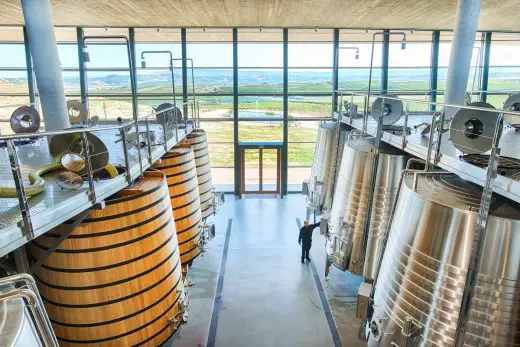
photograph : Gunnar Knechtel
Beronia Winery Ollauri Building
Bizkaia Tower, Calle / Gran Vía 1, Bilbao, Basque Country, Northeast Spain
Design: IDOM Group
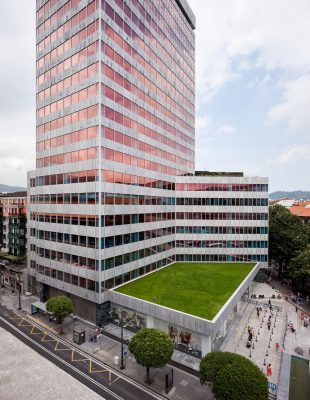
photo : Aitor Ortiz
Bizkaia Tower Bilbao Building
Navarra Buildings
Navarra Architecture
All by Vaillo + Irigaray
Foro Europeo
Foro Europeo Navarra
Joyeria D, Pamplona
Joyeria D Pamplona
Lounge ms, Cadreita
Lounge ms
Restaurante el Merca’o, Pamplona
Restaurante el Merca’o
Comments / photos for the HARIVENASA Oat Factory, Arakil, Navarra design by IDOM page welcome

